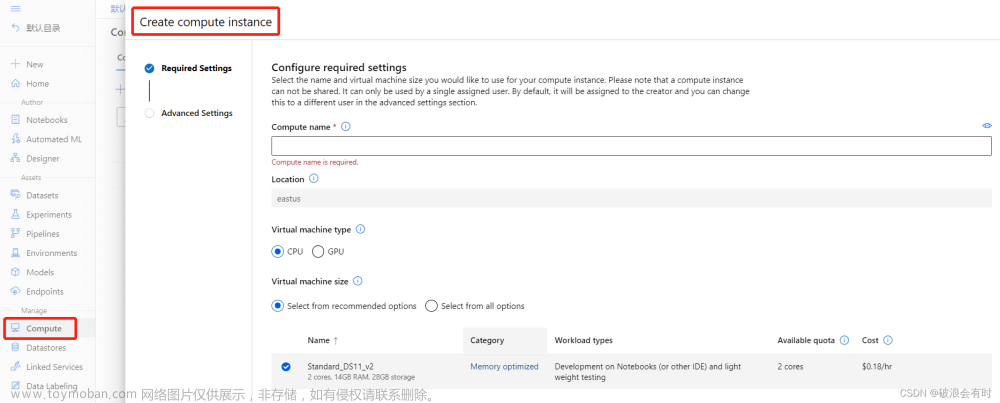论文信息
论文标题:Cluster-Guided Semi-Supervised Domain Adaptation for Imbalanced Medical Image Classification
论文作者:S. Harada, Ryoma Bise, Kengo Araki
论文来源:ArXiv 2 March 2023
论文地址:download
论文代码:download
视屏讲解:click
1 摘要
一种半监督域自适应方法,对医学图像分类任务中常见的类不平衡情况具有鲁棒性。 为了稳健性,提出了一种弱监督聚类流水线来获得高纯度聚类,并在表示学习中利用这些聚类进行域适应。
2 方法
2.1 问题定义
Consider that we have a set of $m^{s}$ labeled source samples, $\mathcal{D}^{s}=\left\{\left(x_{i}^{s}, y_{i}^{s}\right)\right\}_{i=1}^{m^{s}}$ , where $x_{i}^{s}$ is the $i$-th image sample in the source domain and $y_{i}^{s} \in\{1, \ldots, C\}$ is its class label. In the target domain, we have a set of $m^{t}$ labeled samples, $\mathcal{D}^{t}=\left\{\left(x_{i}^{t}, y_{i}^{t}\right)\right\}_{i=1}^{m^{t}}$ , and a set of $m^{u}$ unlabeled target samples, $\mathcal{D}^{u}=\left\{x_{i}^{u}\right\}_{i=1}^{m^{m}}$ . Then we consider the problem of improving the classification performance using not only $\mathcal{D}^{s}$ but also $\left\{\mathcal{D}^{t}, \mathcal{D}^{u}\right\}$ , after adapting $\left\{\mathcal{D}^{t}, \mathcal{D}^{u}\right\}$ to $\mathcal{D}^{s}$ . Since we have the labeled samples $\mathcal{D}^{t}$ in the target domain, this problem is called semi-supervised domain adaptation.
2.2 模型概念图

2.3 方法简介
2.3.1 弱监督聚类
通过软约束聚类优化聚类
第一个聚类优化步骤旨在将每个冲突的聚类(即具有来自不同类别标签的样本的聚类)划分为几个不冲突的聚类。约束聚类引入了两种类型的约束,称为 必须链接 和 不能链接。 必须链接 给应该分组到同一个集群的样本,而不能链接给不应该在同一分组的样本。
本文使用 k-means 初始化聚类,如果同一簇存在不同带标签的样本则不能将 链接附加到它们,反之可以。链接附加后,再次执行聚类,同时满足链接的约束。 应用此步骤后,集群中标记的目标样本始终属于一个类。
通过基于比例的分裂进行聚类细化
第二个聚类细化步骤旨在根据类比例 $\left(p_{1}, \ldots, p_{C}\right)$ 将聚类拆分为更小的聚类,即通过带标签目标样本的比例计算整体的比例。
$\bar{c}_{i}$ 表示第 $i$ 个簇中标记样本的类别,$u_{i}$ 是第 $i$ 个簇中未标记样本的数量。 如果 $m^{u} p_{\bar{c}_{i}} \leq u_{i}$ ,认为集群对于类 $\bar{c}_{i}$ 来说太大了,因此通过 k-means (k = 2) 将其分成两个较小的集群。 因此,即使是小类,也可以期待高纯度的簇。
2.3.2 集群引导域适应
使用上述谨慎步骤给出的聚类结果,我们现在执行聚类引导的域自适应,如 Figs.(c) 和 Figs.(d) 所示。 CNN 模型 $f$ 针对两个目标进行训练。 一种是通过交叉熵损失对所有标记样本 $\mathcal{D}^{s} \cup \mathcal{D}^{t}$ 进行分类,使源样本和标记目标样本靠得更近,如 $Fig. \mathrm{c}$ 所示。 另一种是引导未标记样本 $x_{j}^{u}$ 重新训练后更接近属于同一簇的标记样本 $\boldsymbol{x}_{i}^{t}$(即 $\boldsymbol{x}_{i}^{t}$ 比属于 a 的 $x_{l}^{u}$ 更接近属于同一簇的 $\boldsymbol{x}_{j}^{u}$ 不同的集群)。 更具体地说,我们通过以下目标训练模型:
$\begin{array}{l}\mathcal{L}_{\mathrm{clu}}\left(\boldsymbol{x}_{i}^{t}, \boldsymbol{x}_{j}^{u}, \boldsymbol{x}_{l}^{u}\right)= \max \left\{\left\|\boldsymbol{f}\left(\boldsymbol{x}_{i}^{t}\right)-\boldsymbol{f}\left(\boldsymbol{x}_{j}^{u}\right)\right\|_{2}^{2}-\left\|\boldsymbol{f}\left(\boldsymbol{x}_{i}^{t}\right)-\boldsymbol{f}\left(\boldsymbol{x}_{l}^{u}\right)\right\|_{2}^{2}+\varepsilon, 0\right\}\end{array}$
其中 $f(x)$ 表示样本 $x$ 的特征向量,$\varepsilon \in \Re^{+}$ 是边距。 如 $Fig.1(d)$ 所示,通过使用这种损失训练 $f$ 以及标记样本 $x_{i}^{t}$ 的引导,将未标记样本逐渐映射到源域的相应类。 请注意,在此框架中,我们没有为未标记样本提供任何伪标签——未标记样本被用作未标记样本,以帮助使用 $Eq. (1)$ 中标记样本进行表示学习。
3 实验
可视化
 文章来源:https://www.toymoban.com/news/detail-410253.html
文章来源:https://www.toymoban.com/news/detail-410253.html
4 总结
略文章来源地址https://www.toymoban.com/news/detail-410253.html
到了这里,关于迁移学习《Cluster-Guided Semi-Supervised Domain Adaptation for Imbalanced Medical Image Classification》的文章就介绍完了。如果您还想了解更多内容,请在右上角搜索TOY模板网以前的文章或继续浏览下面的相关文章,希望大家以后多多支持TOY模板网!









![[3D数据深度学习] (PC/服务器集群cluster)CPU内存/GPU显存限制及解决办法](https://imgs.yssmx.com/Uploads/2024/02/497013-1.png)




